Not a tour today, but with the day dawning bright and sunny, and rain forecast for the next couple of days (something to look forward to over Christmas!), it seemed like a good day to get out again.
We made our way cross-country up towards the coast. In the fields around Burnham Market, we came across several large flocks of Pink-footed Geese. It is sugar beet harvesting time at the moment and the geese take advantage of this to feed on the tops left behind after the beet has been cut. The skies were full of lines and skeins of geese all morning.
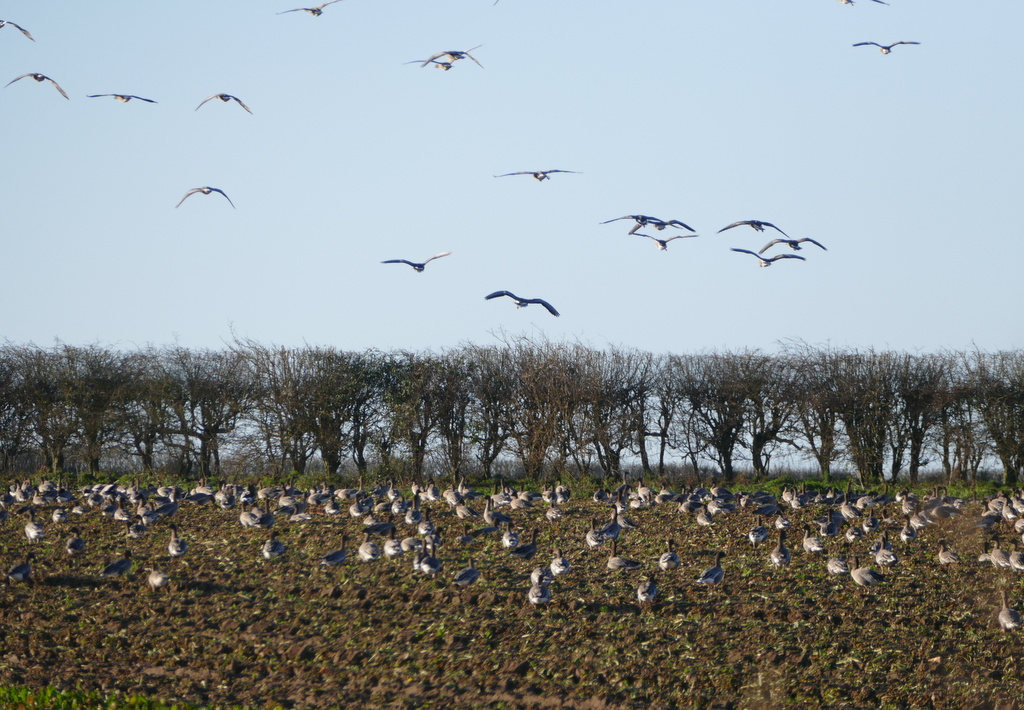 Pink-footed Geese – feeding on fields after the sugar beet was harvested
Pink-footed Geese – feeding on fields after the sugar beet was harvested
There has been at least one (and up to three) Rough-legged Buzzard around Choseley in recent weeks. We were on our way over there to see if we could see it, when a glance out of the car revealed a pale buzzard flying alongside us, over the field beside the road. We pulled over into a convenient layby and the dark belly patch and contrasting white tail base comfirmed it was one of the Rough-legged Buzzards.
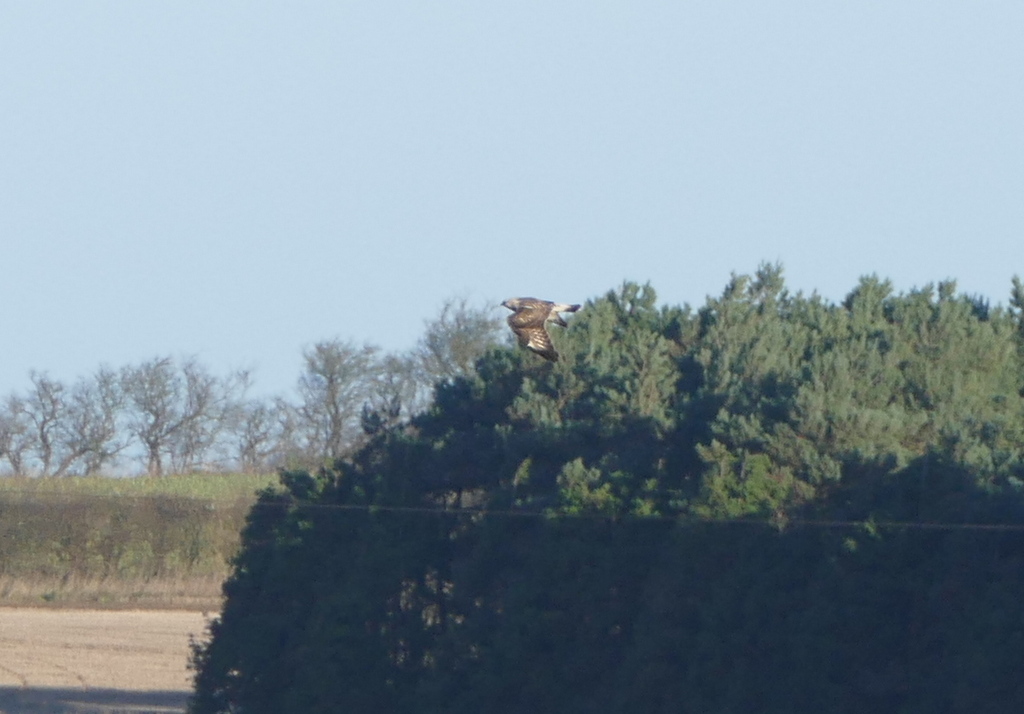 Rough-legged Buzzard – flashing its white tail base
Rough-legged Buzzard – flashing its white tail base
We followed it for a couple of miles, as it made its way across the fields. It stopped a couple of times to hang in the wind. Eventually, we turned north towards Choseley drying barns and it continued on its way west towards the back of Thornham.
 Rough-legged Buzzard – flashing its contrasting black belly patch
Rough-legged Buzzard – flashing its contrasting black belly patch
Our first stop proper was at Thornham Harbour. As we walked out along the seawall, a flock of small finches flew in over the saltmarsh and landed on the path in front of us, around a puddle. Just as we suspected, we could see they were Twite, part of the small flock that has been spending the winter here.
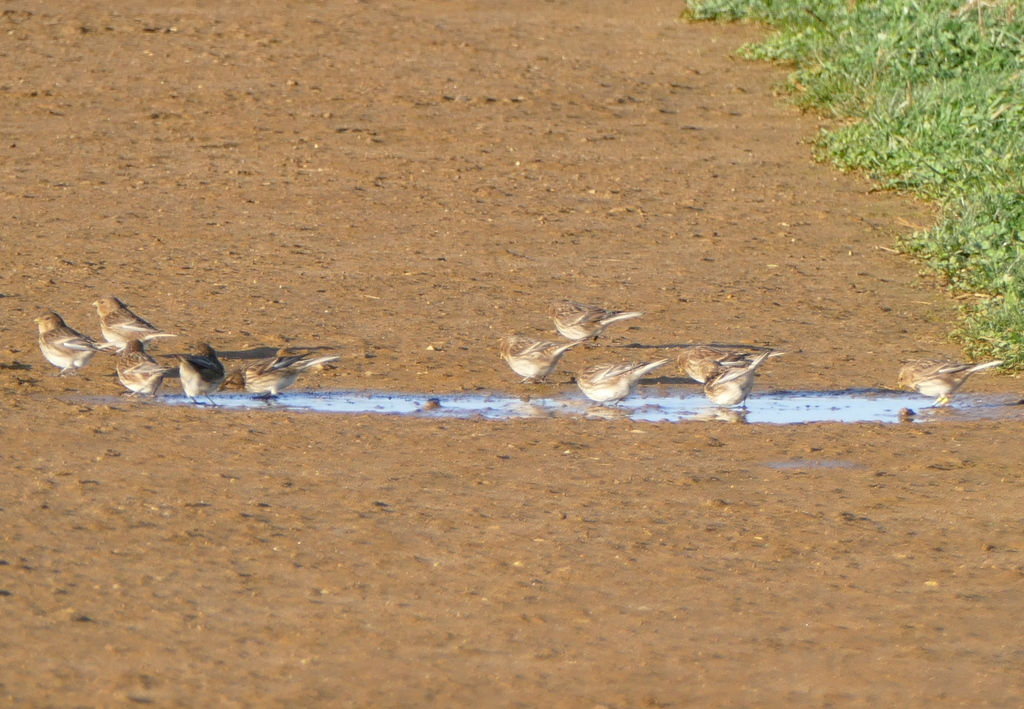 Twite – the flock came down to one of the puddles on the path
Twite – the flock came down to one of the puddles on the path
Several of the Twite had a quick drink, but they were nervous out in the open and before we knew it the flock took off and flew back to the saltmarsh. Thankfully, they didn’t go far but landed on the edge nearest the seawall. We got a couple of them in the scope as they perched on the tops of the dead seedheads, admiring their yellow bills and orangey breasts. Even here, they don’t sit still and before we knew it the flock were off again.
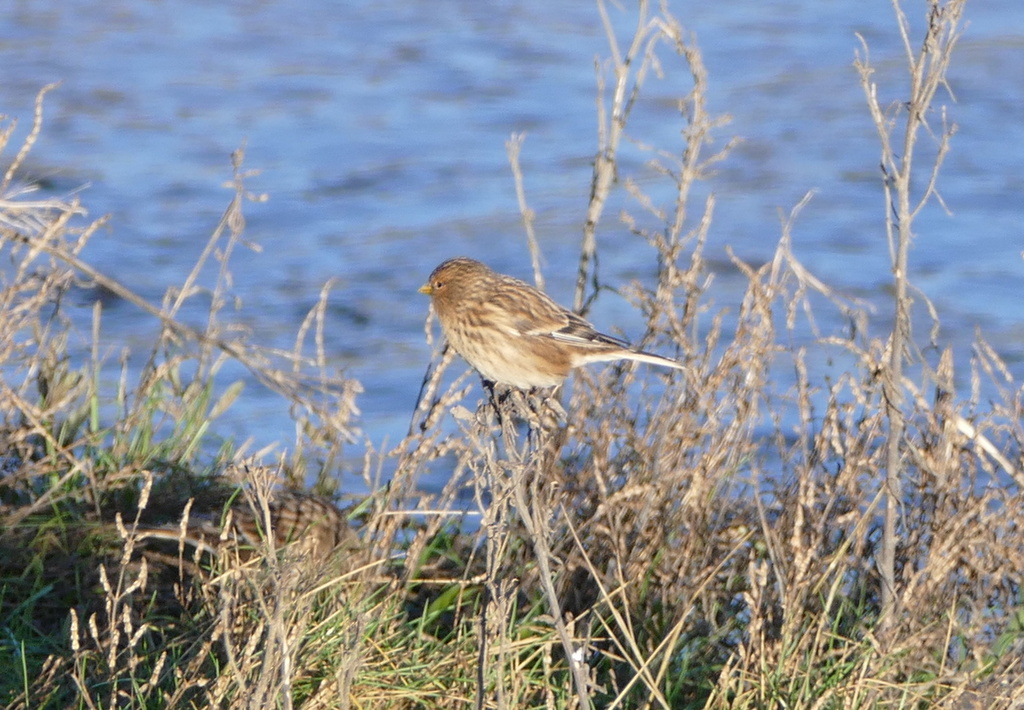 Twite – feeding on the edge of the saltmarsh
Twite – feeding on the edge of the saltmarsh
We continued out onto the beach. We had hoped to catch up with the Shore Larks again here but when we got out to where they should have been, we were told they had just flown off. We had a look out on the beach in the direction they had flown, but there was no sign. When they have been disturbed, they often seem to fly off for a while but typically return to their favoured area. We waited for a short while, but with other things to do today we decided we should move on.
We were already back on the seawall when news came out that the Shore Larks had returned to the beach. Across the other side of the saltmarsh, we could see several people looking intently. A quick look through our scope in the direction their scopes were pointing, and we picked up a Shore Lark feeding on the beach in front of them. Not the best view, but nice to see anyway for the day. The Stonechats along the seawall were far more obliging.
 Stonechat – one of four along the seawall at Thornham today
Stonechat – one of four along the seawall at Thornham today
We popped into Titchwell briefly. We didn’t have time to explore the reserve today, but felt we deserved a hot drink after our windy walk out at Thornham. While we enjoyed a piping hot chocolate a smart green and yellow male Siskin was feeding in the alder above our heads.
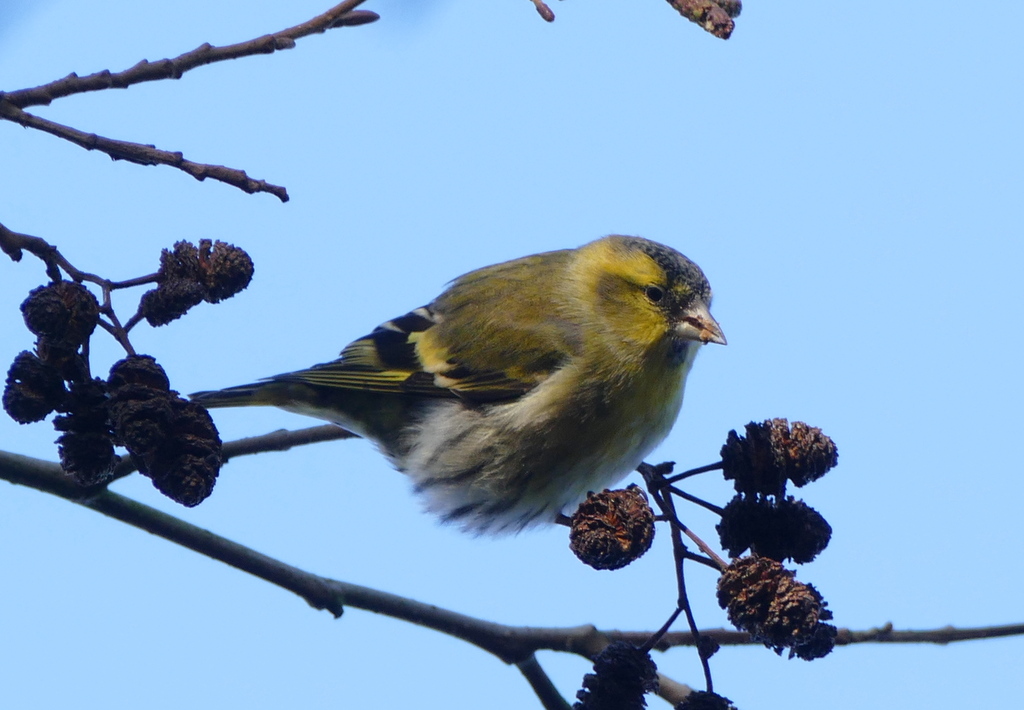 Siskin – feeding in the alder above the picnic tables by the visitor centre
Siskin – feeding in the alder above the picnic tables by the visitor centre
Our next stop was a little further back along the coast at Brancaster Staithe. There has been a Red-necked Grebe in the harbour here for a couple of weeks now and there were several cars pulled up by the harbour channel when we arrived, with long camera lenses poking out of the windows. The Red-necked Grebe was a little further out in the harbour when we arrived, but we could see it coming towards us, diving constantly. We positioned ourselves and the grebe eventually surfaced right in front of us as it passed by along the channel. Stunning views!
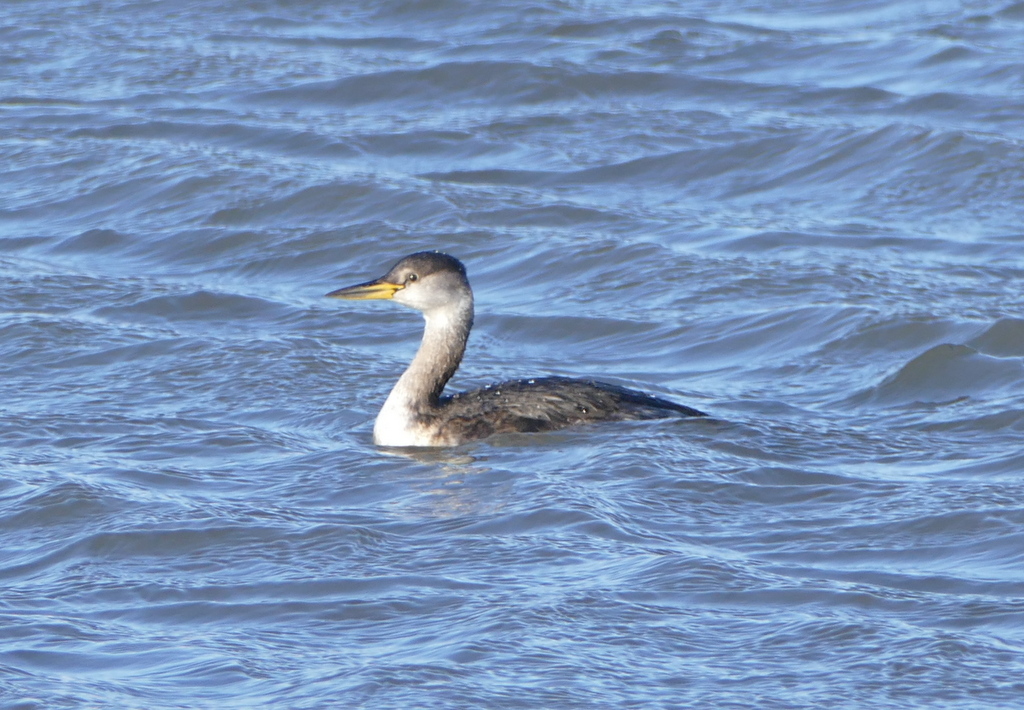 Red-necked Grebe – feeding in the harbour channel at Brancaster Staithe
Red-necked Grebe – feeding in the harbour channel at Brancaster Staithe
There was also a smart pair of Red-breasted Mergansers in the harbour and a good selection of waders – Bar-tailed Godwits, Grey Plovers, Dunlin, Ringed Plovers and Turnstones.
Our next stop was at Holkham. A Red-rumped Swallow was seen at Cley on 17th December and we had been lucky enough to see it flying around over our heads at Blakeney the following day. After going as far along the coast as Titchwell, for the past couple of days it has taken up residence between Wells and Holkham.
It was a little distant while we were there today. It had found a sheltered spot out of the wind, along the front of the trees north of the coast road, where there was unfortunately not a great vantage point. We could see it in and out from the behind the trees, hawking for insects out across the edge of the grazing marshes. Still, we could see its square pale rump and tail streamers.
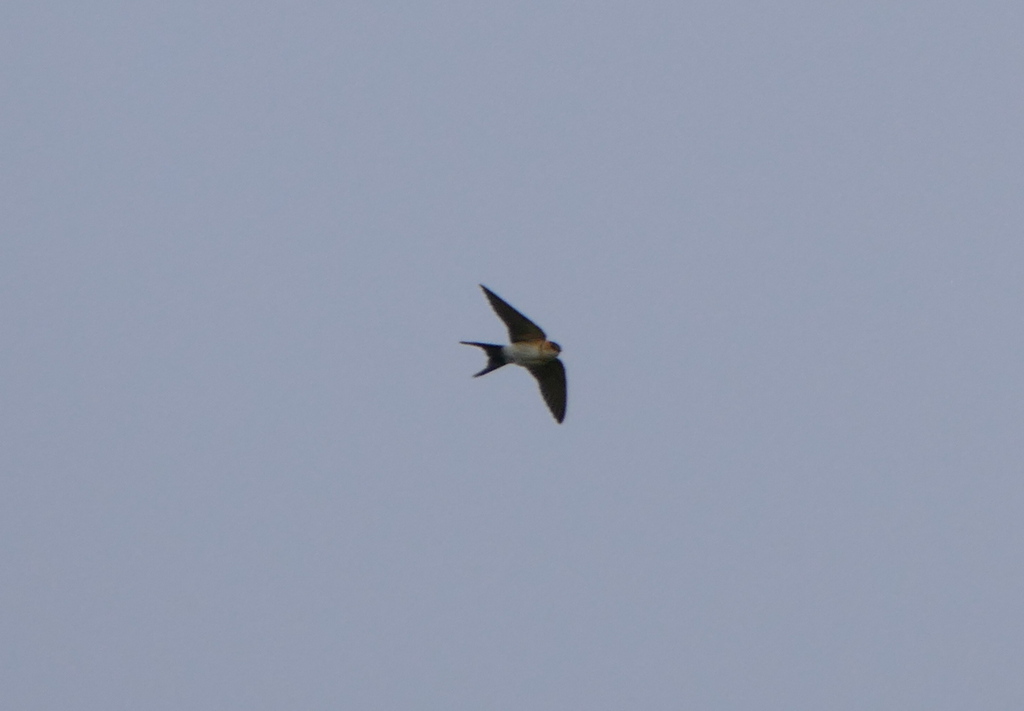
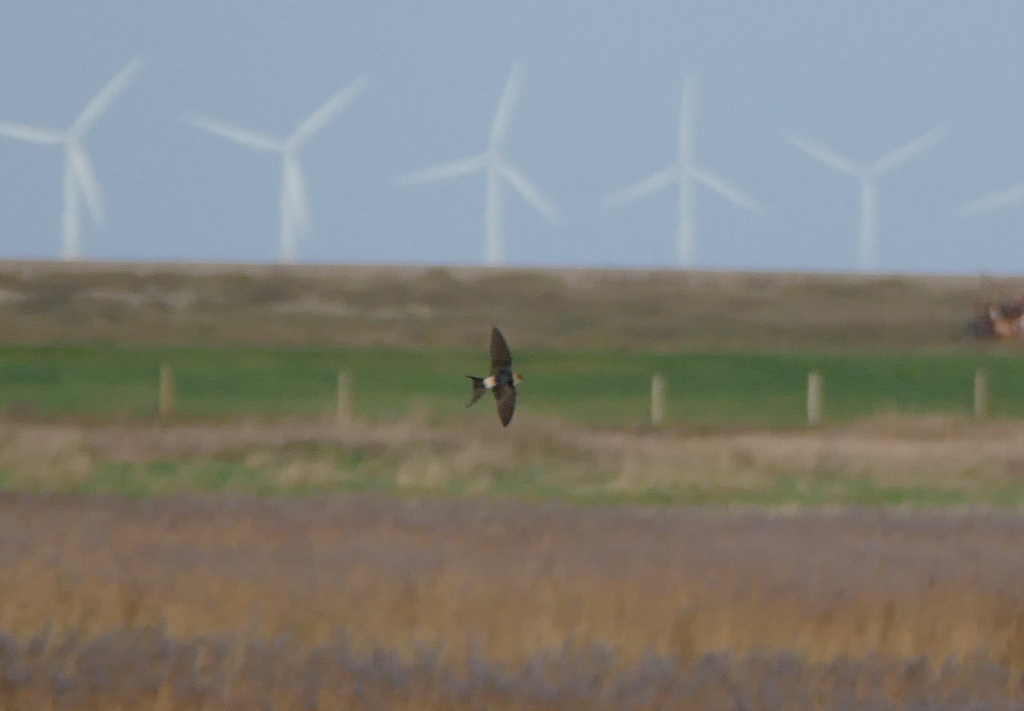 Red-rumped Swallow – photos taken on 18th at Blakeney
Red-rumped Swallow – photos taken on 18th at Blakeney
Red-rumped Swallow is a southern European species and this bird should be spending the winter in Africa. We do get odd birds annually in Norfolk, normally in spring or autumn. This is the latest ever record for the county by some margin – the previous latest sighting was on 17th November – and possibly for the whole of the UK. As such, it is very unusual – but perhaps not such a surprise given the abnormally mild weather we have been enjoying recently. However warm it is though, in this instance, one swallow definitely does not make a summer!
We just had time for one last stop before we had to get back. As we pulled into the car park at Wells Quay, we could see the Shag immediately, perched on one of the pontoons where the boats moor. It was very close, very obliging – it stood preening and watching the boats going past. There are often Shags here in the winter – they nest on rocks coasts to in the north or west of the country, so this is the only time we see them here with any regularity.
 Shag – taken up residence in Wells Harbour again
Shag – taken up residence in Wells Harbour again
It was a great day to be out – with a real variety of birds to be seen. It just goes to show that even in mid-Winter, there is a lot to see here in Norfolk.
















